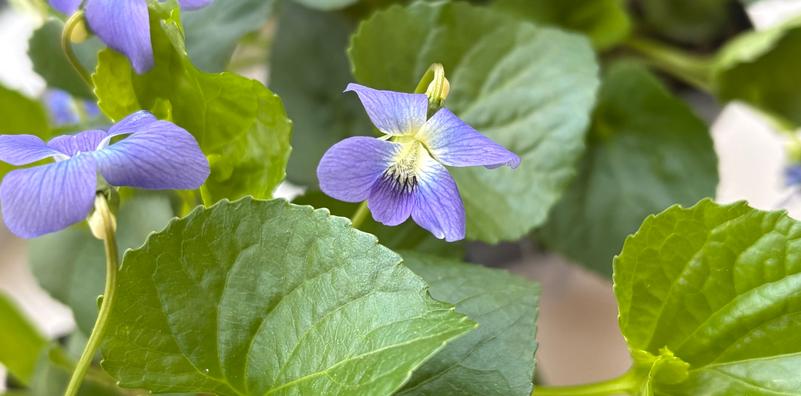Viola soraria: Friend, Foe, or Fritillary Feast?
It’s always a hard sell trying to convince someone that the “weed” they’ve been ripping out of their gardens for as long as they can remember is actually a beneficial (albeit mildly aggressive) native plant. One of the most notable, perhaps, of plants considered an offense to the native gardener’s senses is none other than Viola soraria.
This easy-breezy, widely recognizable annual groundcover is as biologically important as it is culturally relevant, finding itself a muse for poets, artists, musicians, and lovers across the span of its history. Viola soraria is so much more than just a recurring green leafy groundcover that our eyes tend to just glaze over. It’s got purple flowers, too! But, seriously: we don’t give Viola soraria the credit it deserves. This week, we’re doing a Viola soraria deep dive, whether you like it or not - just as it demands in our landscapes.
White-throated on the inside and namesake violet purple on the outside, the small and slightly hairy flowers are almost always one of the first welcomed springtime sights to many novice nature enjoyers (and even to more experienced horticulturists that enjoy a bit of controversy). You may also occasionally notice seemingly stubborn, unraveled blooms at the base of the foliage that seemingly never seem to reach their fullest potential: these are the blooms that are responsible for spreading the promiscuous little groundcover far and wide. These non-open flowers evolve to become whitish fruits that contain an abundance of seeds, which are covered in elaiosomes, sticky, lipid-based substances that are attractive to ants. The ants yoink the seeds right out and take them to their underground lairs, where they then harvest the yummy elaiosomes to feed their wee ones, and deposit the remaining seeds to what we’re affectionately calling the Pit of Waste: a chamber of dead ant corpses and frass, also known as the absolute perfect fertilizer for germinating violets.
Despite their “weedy” status, and besides their benefits to ant babies, our native violas are also actually vital larval hosts for fritillary butterfly species, and not just one or two: we’re talking 14 species of greater fritillaries, and 16 species of lesser fritillaries. In fact, fritillary larvae have evolved specifically to emerge alongside the appearance of springtime violets, and rely exclusively on the foliage of Viola sp., with momma fritillary paying extra attention to lay her eggs near wooded, shady locations that are most likely to promise violets. So, the next time you go to rip out a patch of violet leaves from your yard, try to remember to reconsider to help out your local fritillary populations.
It might be worth reconsidering them for our human benefits also. Not only are they perfect for softening up shady walkways, porches, patios, and lightly treaded footpaths, but the flowers are edible, and impart a sweet, delicate flavor to fresh salads or violet cordials. Keep curious children busy by having them pluck new spring blooms for candied violets, an easy and fun snack delicious on its own or as a seasonal embellishment for desserts, such as this violet lemon poppy seed cake.
Viola soraria is a part of our new quart program, ranging across a handful of grass, carex, and perennial selections that are perfect for filling in space quickly. Check out our availability for all of our quart sized options, and make sure to add Viola soraria to your next order before word catches on about how awesome it is!
See all our Perennials
Viola soraria

